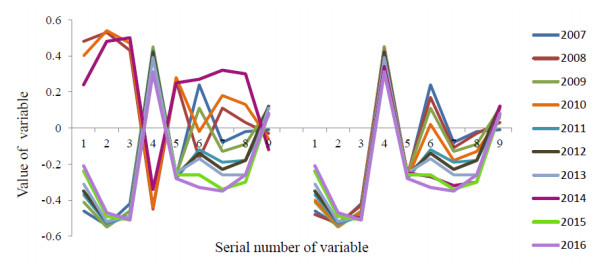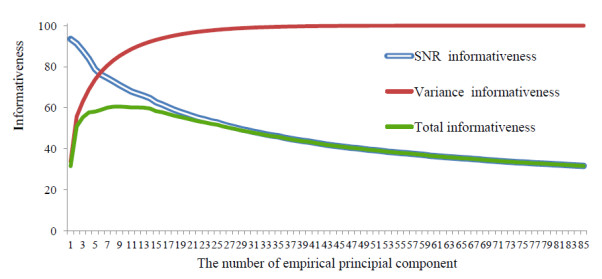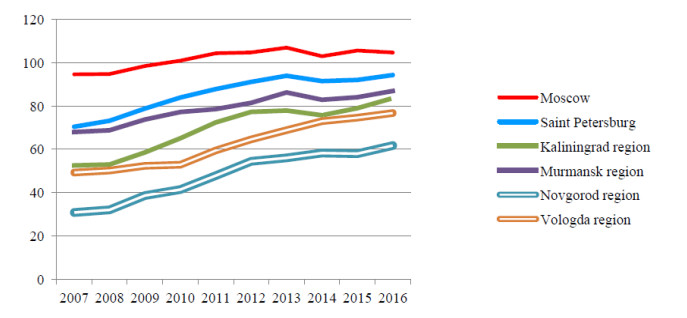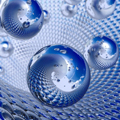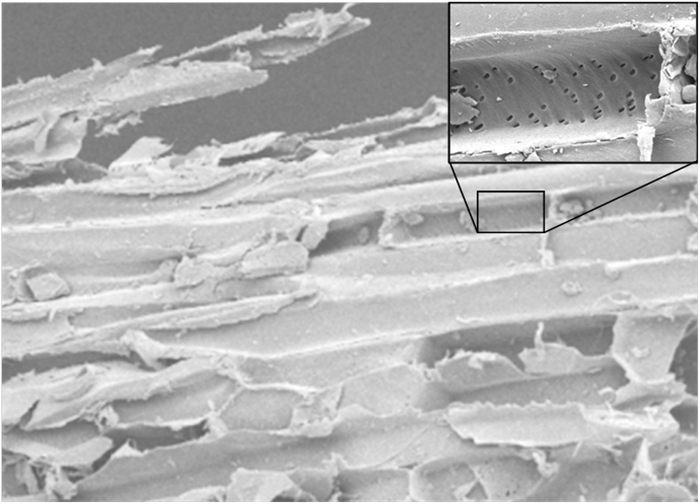1.
Introduction
In most problems solved in the field of measuring technology, radar, astronomy, optical communication, positioning, navigation, television automation and many other broad areas of science and technology, one of the fundamental problems is finding the best way to recognize a signal in the presence of interference. The ideal reception of signals under the influence of noise and interference is based on simple yet deep ideas, set out in the most consistent and understandable form by Woodward (Woodward, 1955). Following this idea, the task of an ideal device, whose input receives a mixture of signal with noise, is the complete removal of unnecessary information contained in this mixture, and the preservation of useful information about those signal parameters that are of interest to the system user.
The task of calculating composite indicators characterizing the quality of a system can also be attributed to the problems of signal isolation against a background of interference. Comparison of the considered objects' integral indicators and ratings generated by their composite indices, makes it possible to judge the degree of achievement of the management objective. Although the scientific community has not come to a common opinion, if it is possible in principle to characterize a multifaceted phenomenon as a single scalar. International organizations, think tanks and social sciences at the turn of the millennium significantly increased the number of integrated indicators used to measure various latent characteristics of social and economic systems: social capital, human development, quality of life, quality of management, etc.
According to the UN, by 2011 there were 290 indices developed for the ranking or integrated assessment of countries. A review of the phenomenal growth in the number of complex indexes used by countries for integrated assessment performed by Bandura (Bandura, 2006, 2008, 2011) showed that only 26 of them (9%) were formed before 1991,132 (46%) from 1991 to 2006, and 130 consolidated indices were formed in the period 2007–2011. A huge number of methods used to assess the latent characteristics of social systems highlight the dissatisfaction with the results and the need for further research in this area.
The rapid increase in the number of complex indexes is a clear sign of their importance in politics and the economy. All major international organizations, such as the Organization for Economic Cooperation and Development (OECD), the European Union, the World Economic Forum or the International Monetary Fund, are constructing composite indicators in various fields (Bandura, 2011; Nardo et al., 2005). The overall goal of most of these indicators is the ranking of objects (countries) and their comparative analysis for some agammaegate measure (Bandura, 2011; Foa and Tanner, 2012; Saltelli et al., 2006; Sharpe, 2004). The use of a single indicator characterizing poorly formalized processes of social systems (quality of life, demographic situation, etc.) is the only possible solution to this problem. Therefore, improving the quality of composite indicators is relevant both from a theoretical and from a practical point of view. A discussion of the pros and cons of composite indicators is given in (Nardo et al., 2005; Foa and Tanner, 2012).
Despite the huge number of used composite indicators, unresolved methodological problems in their design lead to the fact that very often they raise more questions than they give answers. The huge number of applied methods for assessing the latent characteristics of social systems indicates the dissatisfaction of researchers with the results and the need for further research in this area.
The Organization for Economic Cooperation and Development (OECD) is constantly working to improve the methods for constructing complex indexes (Nardo et al., 2005; Saltelli et al., 2006; Nicoletti et al., 2000; Saltelli, 2007). In 2008, the OECD, together with the Joint Research Center of the European Commission, prepared a (Handbook, 2008), which was the result of years of research in this field (Nardo et al., 2005; Saltelli et al., 2006; Nicoletti et al., 2000, Saltelli, 2007; Tarantola et al., 2002). The Handbook sets out a set of technical principles for the formation of composite indices. The authors choose a linear convolution of indicators for the primary method of the data's agammaegation, while the main tool for constructing composite indicators is factor analysis.
So, to build a qualitative integral indicator, it is required: first, a thorough theoretical study of the measured phenomena's theoretical aspects, since "that which is not well defined is likely to be poorly measured" (Nardo et al., 2005), secondly, the choice of data quality, because the quality of the composite indicators largely depends on the quality of the main indicators and, thirdly, an adequate tool for working with multidimensional data.
Such a tool for working with multidimensional data is multidimensional statistical data analysis, namely, factor analysis and principal component analysis (PCA). Factor analysis was first used to combine a multitude of indicators into a single index in the development of the Health Index by (Hightower, 1978).
When calculating Socio-Economic Status Indices (SES), the principal component analysis was adopted as a standard for the construction method, and the calculated index was determined with a projection onto the first principal component (McKenzie, 2005; Vyas S and Kumaranayake, 2006). The same methodology was used by Lindman and Selin in creating the Environmental Sustainability Index (Lindman and Selin, 2011). Somarriba and Penna used PCA in measuring the quality of life in Europe (Somarriba and Pena, 2009). Mention should also be made of (Ajvazjan, 2003) on the definition of a population's quality of life index using the first principal component.
However, the first principal component approximates the simulated situation well if the maximum eigenvalue of the covariance matrix contributes at least 70% to the sum of all eigenvalues. This relationship is satisfied if a small number of features are considered (no more than five), and one of the properties of the system clearly dominates over the others. When describing socio-economic systems, the number of variables significantly exceeds five, and the structure of the system does not allow simple approximation. As a way out of this situation, according to (Ajvazjan, 2003), the information threshold is reduced to 55%, and the system is divided into subsystems described with a smaller number of variables. In the studies discussed above (Hightower, 1978; McKenzie, 2005; Vyas and Kumaranayake, 2006; Somarriba and Pena, 2009), the contribution of the largest eigenvalue ranged from 13% to 38%, with the exception of (Somarriba and Pena, 2009), in which an example of a model was considered, where this figure was 56%.
The authors followed the recommendations (Somarriba and Pena, 2009), which stated that the first principal component gives satisfactory weight coefficients when calculating the integral index even in cases where the largest eigenvalue makes a small contribution to the sum of all eigenvalues. However, such a statement cannot be called indisputable. In the study (Mazziotta and Pareto, 2016) the contribution of the largest eigenvalue of 74% the authors consider insufficient.
For a fixed t an integrated assessment is often recorded for each of the object numbered i in the form of additive data convolution with some weights. Researchers at the Organization for Economic Cooperation and Development hold a different point of view. For the formation of a composite index, factor analysis is used, where the analysis of the first principal components is used exclusively for extracting factors, so that the number of factors extracted explains more than 50% of the total variance. The value of the composite index in this case is determined only with significant loads of the selected main factors after rotation. De facto, this method becomes the standard for calculating complex indexes (Nardo et al., 2005; Nicoletti et al., 2000; Tarantola et al., 2002). Although the authors of (Nardo et al., 2005) pay attention to the fact that different methods of extracting the principle components and different methods of rotation imply different significant variables and, therefore, different weights of variables when calculating the composite index, hence different values of the calculated integral indicator. In addition, factor analysis assumes there is sufficient correlation between the initial variables, which to some extent contradicts the idea of a complete description of the phenomenon under study by a set of independent variables.
Another circumstance should also be noted. Methods for determining weight coefficients using factor analysis cannot be used to compare the characteristics of objects described in dynamics. For different observations, the structure of factors is different, even for fixed methods of extracting factors and the rotation process. This makes intertemporal comparison meaningless (Zhgun, 2013). The reason for the different structure of the main factors may be the insufficient quality of the data used, namely the presence of errors in the data. Nevertheless, it is the statistical data containing fatal errors that currently represent the best estimates of the available real values in social systems (Nardo et al., 2005).
It is impossible to obtain exact characteristics of an object based on a single measurement, which inevitably contains an unknown error. However, based on a series of such measurements, it is possible to calculate the unknown characteristic. In particular, astrophotometry successfully solves this problem. It determines the basic numerical parameters of astronomical objects not on a single observation (image), but on a series of noisy images. Using the basic ideas underlying astrophotometry, we consider the construction of the complex indices changes in the quality of a complex system as a solution to the problem selection of the useful signal on a series of observations containing a description of the unknown parameter (in a multidimensional dataset with noise) with a priori uncertainty of the desired signals' properties based on a specified signal-to-noise ratio.
The goal of this manuscript is to construct a composite system quality index as a solution to the problem of extracting a signal against a background of noise. For this it is suggested to take linear convolution weights as the characteristics of a system's structure. While in order to determine the structure of the system according to a series of observations a modification of the PCA for a noisy signal is proposed. Further the stability and reliability of the composite index obtained is investigated.
2.
Calculation of the integrated system indicator for a series of observations
To solve the control problem, it is required to give a motivated estimate of each observed object on the entire observation interval, i.e. to calculate in dynamics the integral characteristic of system quality according to the results of available measurements. Let's consider the construction of an integral estimation of a system of m objects for which tables of n descriptions of those objects for a series of observations are known. For each moment t the vector of integral indicators is written as
For a fixed t an integrated assessment is often recorded for each of the object numbered i in the form of additive data convolution with some weights
where qt = ( q1t, q2t, …, qmt,)T —is the vector of integral indicators of the moment t, qt—is the vector of the weights for the moment t, and At — is the data matrix for the time t. The numerical characteristics of the system are preliminarily subjected to unification—the reduction of the variables' values to the interval [0, 1]. If the initial indicator is related to the analyzed integral quality feature by monotone function, their putting to the interval [0, 1] will transform the variables xij for each time point of observation according to the rule:
where sj = 0 if the optimal value of the j-th index is maximum and sj = 1 if the optimum value of j-th index is minimal and
mj – minimum value of the j-th index for the whole sample (global minimum), Mj – maximum value of j-th index for the whole sample (global maximum). In case where there is another optimal (not minimum or maximum) index value, the following formula is used:
To build an integral indicator of the systems' quality, it is required to find weights wt for each time point. The method of expert assessments for determining weights is widely used due to the ease of obtaining information. However, not every complex system has a sufficient number of qualified experts. In addition, expert services are a commodity, so they are not cheap and cannot be objective. It is preferred to use formal methods that do not use human preferences (Nardo et al., 2005; Nicoletti et al., 2000; Ajvazjan, 2003). On the other hand, the extent of the importance (weights) of the variables calculated using formal methods often does not coincide with the intentions of the developers. Therefore, the weights are carefully investigated. (Becker et al., 2017a, 2017b; Paruolo et al., 2013).
The Principal Components Analysis (PCA) is perhaps the most-used method to obtain weights intrinsically. However, the application of this technique gives unexpected results. For example, in a study (Molchanova et al., 2014), the quality of life is determined by PCA (Ajvazjan, 2003). Obviously, geographically close regions should have comparable quality of life ratings. For example, Novgorod and Pskov are neighboring constitute entities and close in all parameters. However, the rating of the Novgorod province is 29, while the rating of the Pskov province is 54 (out of 83 positions). It is also obvious that the quality of life near a megapolis is higher than in Siberia and the Far East. Nevertheless, the rating of the Leningrad province is 63, lower than the ratings of Novgorod and Pskov provinces, almost as low as the rating of Sakhalin 64. Complex indices, that give such ratings, cannot be called reliable.
If technique PCA is applied to a series of observations made at different times, then, in the condition of a stable situation, the ratings have strong fluctuations (Gajdamak and Hohlov, 2009). In this case as well, the complex indices, that determine such ratings, cannot be called reliable. The numerical evaluation of such changes for (Gajdamak and Hohlov, 2009) is given further in paragraph 3.
In the paper (Mazziotta and Pareto, 2016) the authors consider that PCA is a blindly empiricist method based on the observed correlations and it ignores the polarity of the individual indicators. Therefore, if the normalized indicators are not all positively intercorrelated, the results are not correct. It should be noted that the amount of variance accounted for, and the weights computed by PCA change over time, so the results of different PCAs are not easily comparable. Consequently, they believe the use of PCA for the construction of composite indices for assessing multidimensional phenomena is at all improper. It should be noted that this conclusion was made when constructing a composite index for a single observation.
However, any measurement, including statistical, is determined by the accuracy of the measuring device, therefore the measurement result always contains an unavoidable error. The construction of system's integral characteristic can be considered as the task of isolating a useful signal against a noisy background. This problem is analogous to the problem of restoring digital images distorted by Gaussian noise. The principal component analysis makes it possible to isolate the structure in a noisy array of data and it is successfully used to reduce noise in image restoration.
The quantitative characteristics of a particular system, related to its structural features, depend on the signal-to-noise ratio. SNR—signal-to-noise ratio (SNR) is the ratio of the signal (more precisely, the sum of the signal and noise) to noise. The value is calculated either as a dimensionless ratio of the signal amplitude to the noise amplitude SNR = As / An, or, in decibels, SNR (dB) = 20 log 10 (As / An).
This ratio most fully describes the quality of the signal in technical systems: television, in means of control and diagnostics, in mobile communication systems, in astrophotometry, etc. This ratio most fully describes the signal quality in technical systems: television, in control and diagnostic tools, in mobile communication systems, in astrophotometry, etc. The choice of the SNR threshold value, which makes it possible to distinguish a signal against noise is justified (Zhgun, 2014).
Moving to another point in time means a change in the data, which is caused by both a change in the situation and random errors. The analysis of the principal components based on different values (for consecutive moments) of eigenvectors and eigenvalues describes the invariable structure of the system. Therefore, the undistorted values of the eigenvalues and eigenvectors will be a signal that must be extracted from the noisy data. For eigenvalues, such a signal is the average. Averaging works on the assumption that the noise is absolutely random. Such averaging of the values is used in astrophotography for noise suppression. The assumption that there is a general trend in the variation of input data is illustrated in Figure 1, where the values of the covariance matrices ordered in descending eigenvalues for different observations are presented. In the mean, a tendency (signal) and a deviation from it (noise) are clearly visible.
The eigenvectors in the PCA are determined up to the direction, in contrast to the eigenvalues, which are uniquely determined. The mean value of variables' factor loadings depends on the chosen direction and cannot unambiguously characterize the signal.
Based on the eigenvectors calculated for various observations (ordered in decreasing order of eigenvalues), it is necessary to recognize the random and nonrandom components of these vectors.
We assume that the nonrandom (significant) contribution of a variable to the structure of the main component is not a large value of the factor load after rotation, but an invariance of the factor load with data disturbances. A sign a variable's invariance is the signal-to-noise ratio, which is calculated from the values of this variable's factor loads. The signal amplitude is the absolute value of the mean of the load factors, the noise amplitude is the standard deviation of the load factors.
If the signal-to-noise ratio is above the threshold value, then such a variable is considered nonrandom. Otherwise, the variable characterizes the noise component of the signal and does not participate in further consideration. In Figure 2 the choice of the direction of the eigenvectors for the first principal component is shown.
The criterion for choosing the direction of the eigenvectors will be the maximization of the signal level—the sum of the calculated SNR values for significant variables. The principal component thus obtained will be called the empirical principal component (EPC), the significant variables, as in factor analysis, will participate in further consideration, and the insignificant variables are ignored. Table 1 gives an example of the determination of an EPC from eight observations. The second, fifth, eighth and ninth variables turned out to be significant (the calculated SNR is above the 2.2 threshold) and the load values for these variables will be non-zero loads in this EPC.
In the algorithms for computing the integral characteristic from the PCA method (Sharpe, 2004; Nicoletti et al., 2000; Saltelli, 2007; Handbook, 2008), the concept of informativeness, which is traditional for the PCA, is used, which determines the number of principal components l used to calculate the integral characteristic.
However, the dimensionality of the feature space in the problems of computing the integral quality characteristic of a complex system is not too large, and there are no computational problems in determining the eigenvalues and vectors. A qualitative description of the structure of the system requires either all the principal components or a sufficiently large number of them. It may turn out that information valuable for a particular task is contained solely in last principal components. For example, when creating a digital terrain model that is based on digitized images, the desired contour is given with the eighth and ninth principal components, and the principal components 12 and 13 in the method "caterpillar" estify to the availability of periodicals with a fractional period in the analyzed data (Golyandina et al., 2008)
Approaches to estimating the number of principal components with respect to the required fraction of the explained variance are formally applicable, but implicitly they assume that there is no separation into "signal" and "noise", and any predetermined accuracy makes sense. When the data is divided into useful signal and noise, the specified accuracy becomes meaningless and it is required to redefine the notion of informativeness. Analogously to the variance of information according to (2), it is possible to determine SNR- informativeness for a selected number of empirical principal components N:
where S1k—is the sum of the SNR values of the operating variables of the k-th EPC, S2k—is the sum of the SNRs of all the variables of the k-th EPC. This value will be a posteriori estimate (from above) of SNR-informativeness. Unlike dispersion information, SNR-informativeness cannot reach 100% according to the logic of construction. The informativeness of the chosen system of attributes is determined by the variance and SNR-informativeness:
The number of selectable EPCs involved in calculating the composite index maximizes the total informative value of the solution, determined both by the traditional cumulative dispersive information content and the accumulated SNR-informativeness characterizing the level of the EPC signal relative to the background level. Variance informativeness increases with increasing number of EPCs used, and SNR-informativeness decreases, since the younger components carry more noise. SNR - the informativeness of the EPC, defined in Table 1, is 15.37 / 19.7 = 0.78. The algorithm that realizes the foregoing is given (Zhgun, 2017a)
Figure 3 shows the definition of the number of empirical principal components for calculating the complex index of the system, described by 85 statistical indicators. The maximum information content of the system γ = 60.52% is achieved, if nine EPCs are used for calculating the complex index of the system. If we use more EPCs to calculate the complex index, then the information content and the reliability of the computed characteristics is reduced.
3.
Investigation of the quality of integrated indicators
According to the proposed algorithm, the complex indexes of quality of life for Russia's constituent entities for 2007–2016 are calculated. It is worth noting that the determined weighting factors characterize the structure of the system. Over the observed time interval, the structure should be constant. In Russia, there are changes in different areas, so a longer period should not be considered. Data for 2016 was the latest available at the time of this writing.
Variables from (Isakin, 2006) were used for the study (Table 2). All values of the variables are taken from the open directories of Rosstat. Among the listed variables, variables 1, 2, 5, 7, 9, 10, 12, 21, 22, 23 are related to the calculated characteristic by the monotonic increasing dependence, when the optimal j-th value is maximum. The remaining indicators, except for variable 27, the optimal index value is minimal. For variable 27 "net migration" xjopt value equals sample mean.
To obtain the weights of the second block, ten empirical EPСs were used. Used indicators and the resulting weight vectors for these blocks are presented in Table 2.
The number of EPCs for calculating the composite index should maximize the informational value of the obtained solution, defined by (7)—Table 3.
Once the three intermediate composite indices had been constructed, they were agammaegated by allocating a weight to each one of them equal to the proportion to the SNR-informativeness (to the signal level). The block weights are defined in Table 4.
The results are shown in Table 5. The values of the complex indexes obtained vary from 1 to 100 (in 2007). The Republic of Tyva has the minimum unit value; Ingushetia has the maximum value of 100.
The change in the quality of life for some of Russia's constituent entities is shown in Figure 4. It is interesting to trace the reflection of recent political events on the values of the computed composite index. The impact of the events of 2014 most affected the quality of life in the maritime regions—Kaliningrad and Murmansk—and the financial capitals of Moscow and St. Petersburg. In other regions, the quality of life index is less subject to fluctuations when the political situation changes. Nevertheless, the gap in the quality of life with the leaders is almost not reduced.
Consistently, the highest complex indices of quality of life for the entire observation period are shown by the constituent entities of the North Caucasus Federal District. Of the 37 indicators, when calculating the complex indices of quality of life, 20 reflect the human physiological well-being and explain (along with the characteristics of national statistics) high indicators for the national republics of the North Caucasus (North Ossetia, Ingushetia, Chechnya, Dagestan, etc.). In these constituent entities of the Russian Federation, it is less likely to get sick, die and undergo criminal violence. The population of these entities is not excessively involved in industry. Life expectancy in Ingushetia is the highest in Russia and exceeds the Novgorod region by 10 years.
4.
Estimating the stability of a composite index
Researchers from Russia who compute integrated indicators for different observations complete their research at the stage of calculating and analyzing the ratings obtained, without analyzing the quality problems of the results, in particular robustness and sensitivity (Ajvazjan, 2003; Ajvazjan et al., 2009; Gajdamak and Hohlov, 2009)
The main area of application of composite indexes is the rating of objects. It is the position of the object relative to other objects that is the basis for attracting public attention, and for making political decisions. If small changes in the input data (values of scores or weights) when calculating the composite index fundamentally change the ranking of objects made on the basis of the calculated complex indices, then such an integral indicator cannot be considered reliable. A necessary attribute of the reliability of a composite index is stability relative to perturbations of the original data. In particular, the consequence of this is a slight (on average) change in the rating of objects for different times.
The researchers, who calculate the complex indices for various observations, complete their research at the stage of calculating and analyzing the obtained ratings without analyzing the problems of the quality of the results, in particular, robustness and sensitivity.
It should be noted that the ranks of the 25 member countries of the European Union for 2009–2011, based on the values of the HDI (when calculating the value of the HDI by linear convolution with equal weights) give an average change in the rating for the year of 7.7% (Human Development Reports, 1990–2014). The change in the ratings of more than 15% makes up 14% of cases; more than 30% is 2% of cases. In other words, values are typical in the case of linear convolution with constant weights.
In a study that determines complex indexes of quality of life for the Russian Federation according to the methodology proposed by (Ajvazjan, 2003), ratings for constituent entities were exhibited according to two methods: the weights of the indicators for each year in the linear convolution were determined in one case by experts, in the other by the method proposed by the author. Cases when the rating change amounted to more than 15% are the following: 18 in the case of expert weights, one in the case of calculated weights. The average change in the rating for the first method is 3.6%, for the second method it is 1.6%. Hence, the proposed methodology showed a brilliant quality of the constructed composite index.
However, with careful application of this technique by other authors, the results turn out to be quite different. For example, in the paper (Gajdamak and Hohlov, 2009) the complex indices of the quality of life for municipal formations of the Tyumen region (2005–2008) were calculated. In this case, a change in the rating of more than 15% of the maximum is 48.9% of the total number of cases. In 17.9% of cases, this value exceeds 30%. The average rating change is 16.9%. In the paper (Ajvazjan et al., 2009) values of ratings for municipal formations of the Samara area, calculated by the same method, are given. 45% of objects significantly changed their position in the rating (by 15% or more from the maximum possible rating change). In 21.6% of cases the rating change exceeds 30%. The average rating change is 16.9%.
If small changes in input data while calculating the composite index dramatically change the ranking of objects, then such a composite index cannot be considered reliable. A necessary attribute to the reliability of a composite index is stability relative to perturbations of the original data. In particular, the consequence of this is a slight (on average) change in the rating of objects for different measurements. Schemes for determining weights using factor analysis or the principal component analysis do not have this property.
Let Rt = (rt1, rt2, …, rtm)—the ratings of m objects for the moment t. Known values of the rating sets Rt, Rt+1,..., RT for the moments t, t + 1, ..., T. Rt—can be considered as a random value uniformly distributed on the interval [1, m]. Numerical characteristics Rt correspond to the numerical characteristics of uniform distribution.
Values of ratings for object i at successive instants of time rti, rt+1, i, rt+2, i represent a numerical implementation of a complex functional dependence, a formal description of which is not possible. Changes in ratings over time are dictated mainly by this dependence and to a lesser extent by random factors. The degree of linear connection between the sets of Rt, Rt+1 ratings is high, the Pearson and Spearman correlation coefficients are close to one and do not allow the making of unambiguous conclusions about the quality of the ratings. We propose a method for estimating the stability of a composite index.
If the random variables Rt, Rt+1 are independent, then the variance of the difference of independent random variables is equal to the sum of the variances D(Δt)=D(Rt+1−Rt)=D(Rt+1)+D(Rt).
Because X is even distribution on [a, b], then the variance D(X) = (b-a)2/12. Therefore, D(Rt) = D(Rt+1) = (m-1)2/12 and
It is possible to estimate the stability of the complex indexes by estimating the randomness of the difference in the exposed ratings of Rt. Such an estimate of randomness is the fraction of the variance of the realization of the quantity Rt with respect to the variance (9), which reaches a maximum if the ratings Rt, Rt+1 for two consecutive moments of time are absolutely independent of each other and are completely random. Since randomness is not the main reason for rating change, this share should be small.
Table 6 shows the results of assessing the quality of different complex indexes. As a conditional unit of sustainability, we can consider an estimate of the integral index of the HDI, which is about 7% of the possible randomness.
The magnitude of the estimate, comparable to this value, will indicate a relatively good stability of the integral indicator with respect to the input data. Values that significantly exceed this value characterize the instability of the complex indexes and, consequently, it's of poor quality. In the table below, these are studies Gajdamak and Hohlov (2009) and (Ajvazjan et al., 2009), where the method Ajvazjan (2003) is implemented. The author's method shows good stability.
5.
Conclusion
In this paper we consider a solution to the problem of constructing latent complex indexes for the change of a systems quality on the basis of registered measurements for a number of observations in the absence of training. An analysis of the stability of such a solution is provided.
The construction of a system's complex indexes can be considered as a task of extracting the useful signal from a background noise. The signal in this case is the weights of the linear convolution of the indicators. Determined weights should reflect the structure of the system being evaluated. Successful application of the PCA to describe the structure of various system types suggests that the method will also give adequate results for describing social systems. However, the principal component method and factor analysis (even with fixed methods for extracting factors and the method of rotation) determine the structure of the principal components and the main factors for different observations differently. Hence, the method of determining weights using multidimensional analysis cannot be used to compare the characteristics of objects in dynamics.
The reason for this may be the presence of irremovable errors in the data used. Even a small perturbation in the source data can cause a significant change in the weights when using multidimensional analysis methods. As a way out of this situation, a modification of the principal component method is proposed, taking into account the presence of errors in the data used. The algorithm uses a new approach to choosing the number of principal components, to determine the significant loads of the principal components describing the structure of the system, to determining the weights of the considered subsystems, and to determining the informativeness of the selected principal components based on the signal-to-noise ratio parameter.
The solution of the problem requires a detailed understanding of the influence of the errors in the data used on the calculated characteristics. The consequence of stability is on average a slight change (increment) of the ratings of objects for different measurements. This increment can be a posteriori estimated by a sequence of observations using the proposed dispersion criterion. Estimates of different complex indexes' stability by the variance criterion are given. Complex indexes calculated using the proposed modification of the principal component method, which takes into account the presence of errors in the data used, show good resistance to changes in input data.
Conflict of interest
The author declares no conflict of interest in this paper.
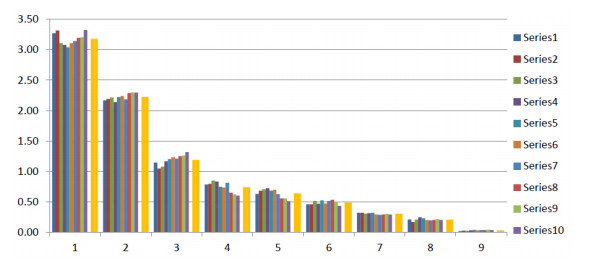









 DownLoad:
DownLoad:
